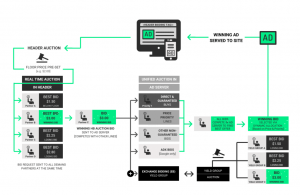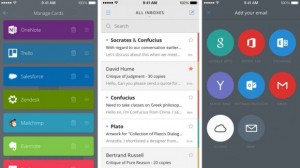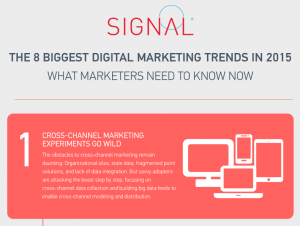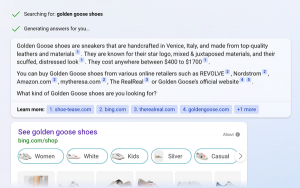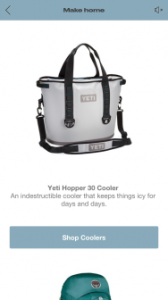Want more phone calls? Columnist Daniel Faggella says the key lies in your calls-to-action.

I want to talk about one of my absolute favorite strategies for generating an immediate return on investment from email marketing: varied calls-to-action.
This was something I used when I was just starting out, and it was responsible for more than half the appointments on my calendar. Throughout this article, I’m going to provide you with three steps for achieving success with this strategy because you’re definitely going to want to employ this method for your marketing campaigns.
Though I’ve commonly suggested service businesses use these email-to-phone strategies, it’s possible for any business (even one offering digital or physical product) to leverage the same tactics.
Unfortunately, most websites and e-mail messages from service businesses have rather weak calls-to-action. As a result, these companies don’t solicit nearly as many inbound appointments as they could, and they leave money on the table.
So what do I mean by “call-to-action,” or a CTA?
It’s a combination of two elements: a reason to contact your business for sales appointments and a way to contact your business for sales appointments (either by phone or e-mail).
If “give us a call” or “email us here” are the only CTAs you’re using on your website or in your emails, you’re missing out on a lot of possible appointments. With the varied CTA method, we can turn more website visitors and e-mail readers into qualified sales appointments.
Phone calls are usually the gold standard when it comes to moving a prospect closer to a sale. If all you do is email, your likelihood of getting appointments is lower than if you were to give someone a call. Few service businesses can garner a steady intake of appointments without making use of the phone to book and confirm appointments and close sales.
Many of the strategies we use, including the varied CTA method, are effective at getting prospects on the phone. These strategies are about moving people forward on their buyer’s journey to becoming a client, which requires a phone conversation. Following are the three additional CTAs we can use to do this.
Additional Call To Action 1: Using Scheduling Apps
The first requires you to make use of as scheduling app to allow prospects to schedule their own times for a call, visit, or appointment. One example of such apps includes YouCanBook.me. When prospects land on the page, they can select a time and enter their information. Upon completion, they will receive a confirmation message of some sort that you have written.
Calendly is another scheduling app that is user-friendly, clean-looking, and professional. Using it, people can book appointments by clicking on available dates and their scheduled appointment will appear on their own Google or Outlook calendars. They can then move forward with their appointment or call at whatever time they set for themselves.
The key to these apps is that prospects have the autonomy of picking their own appointments, and this provides a better experience for them, which reflects onto your business.
Scheduling apps are essential because the most eager prospects will likely use whatever method of contact they can find when they come across your website or receive your e-mail. This often involves calling you or e-mailing you directly. These people will want to get in touch right away (bear in mind that you’re not always in the office, so it’s important that phone calls are not their only possible way to contact you).
On the contrary, most prospects are skeptical, busy, or not fully convinced that your business is the right choice for them. Allowing their own time for a phone call or appointment without calling you first is often much more comfortable for them.
A scheduling app allows prospects to have their first call or appointment with your business on their terms, when they’d like. Additionally, scheduling apps cut down on the back-and-forth e-mails in which you and a prospect are trying to find a time that works for both of you.
Additional Call To Action 2: Using Survey Forms
The second additional CTA is the appointment or survey form. Unlike scheduling apps, the survey form allows the prospect to provide more information about what he or she is interested in with regards to your service business. This provides the prospect with a sense that his or her service and experience with your business is personalized.
The phone can be intimidating or inconvenient for many prospects, and so soliciting their phone number through a survey form is often easier than convincing them to call your business immediately. Also, soliciting information from your prospects can provide insight into their needs and allow you to marshal your best sales resources for the kind of appointment they’re seeking. Knowing about their interest can help close sales.
Additional Call To Action 3: Using Pull-Back Campaigns
Lastly, the third additional CTA you can use is the pull-back campaign. It’s a marketing strategy that you can apply to almost any medium, but most easily can be applied to e-mail marketing. A successful pull-back campaign involves being proactive.
After any e-mail offer that a service business might promote (for example, a free martial arts seminar), appointments, and further action can be garnered by following up with anyone who showed modest interest in the offer but ultimately did not schedule an appointment.
For example, let’s say I sent out an e-mail for CLVBoost that allows people to click a link to fill out a survey form. There might be some people who click the link but don’t fill out the form. These are people I can proactively contact because I know they’re at least modestly interested in the offer.
Usually, these interested prospects are completely ignored, and this is a serious mistake. You should communicate with people who show a small amount of interest even more frequently than with those who show a lot of interest, so that you can get them on the phone.
Most service businesses send out their emails and hope that prospects will respond to their marketing. Pull-back campaigns can mine more business out of the same promotion.
Let’s say the email I sent out offers a free t-shirt for anyone who shows up for a martial arts class. We’re going to call anyone who clicked the survey form link inside the e-mail who didn’t make an appointment. From there, you can also call anyone who opened the email but who didn’t click the survey form link.
Additionally, we’re going to resend the exact same e-mail to those who didn’t open the original e-mail with a new subject line. If they haven’t opened the first email, they won’t know the internal content of it. We then don’t need to write an entirely new email.
Let’s say the first email’s subject line was “Free t-shirt at Billy’s Martial Arts.” When resending the email to those who didn’t open the first one, we’ll rewrite the subject line as “I have a free t-shirt for you, [first name].” If you have a service like AWeber or Getresponse, this is a quick and easy process.
In review, a day after the next email promotion, you send out for your business, call the prospects who clicked the survey form link in your email but who did not fill out the form. If those calls generate appointments, then you can expand your scope to all the prospects who opened your email but didn’t click the survey form link, and call all of them, as well.
If this generates even more appointments, you can resend the email with a new subject line to prospects who didn’t open the original email. If you aim to systematically drive more calls with your email marketing (possibly starting with what I call an Email Marketing Audit, which you can conduct yourself), you’ll want to think about how these CTAs are being used not just in newsletters, but in your automated marketing sequences as well.
Using these varied calls-to-action is going to result in the generation of more appointments. You absolutely need to try these in your next marketing campaign.
Marketing Land – Internet Marketing News, Strategies & Tips
(251)
Report Post

